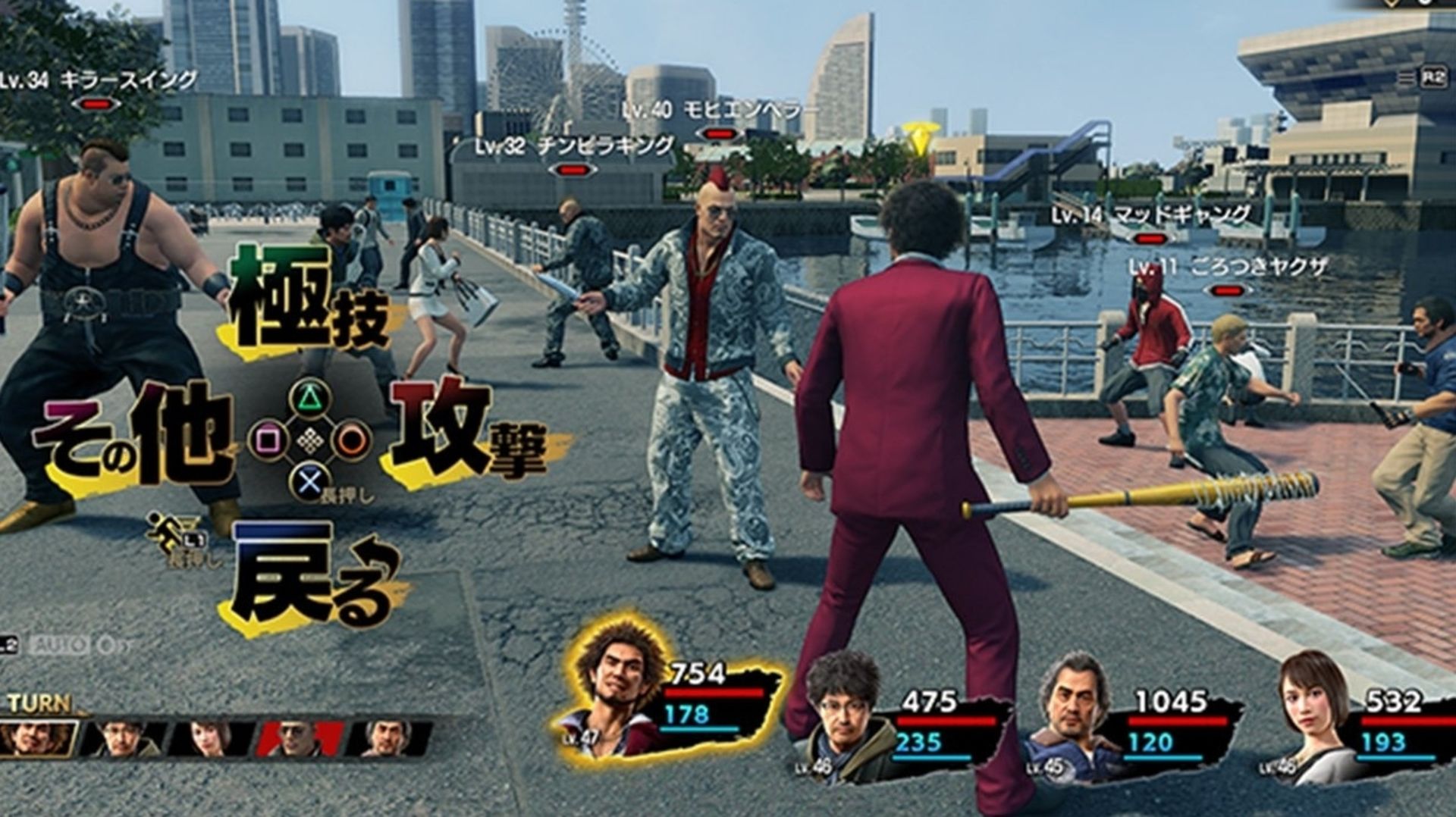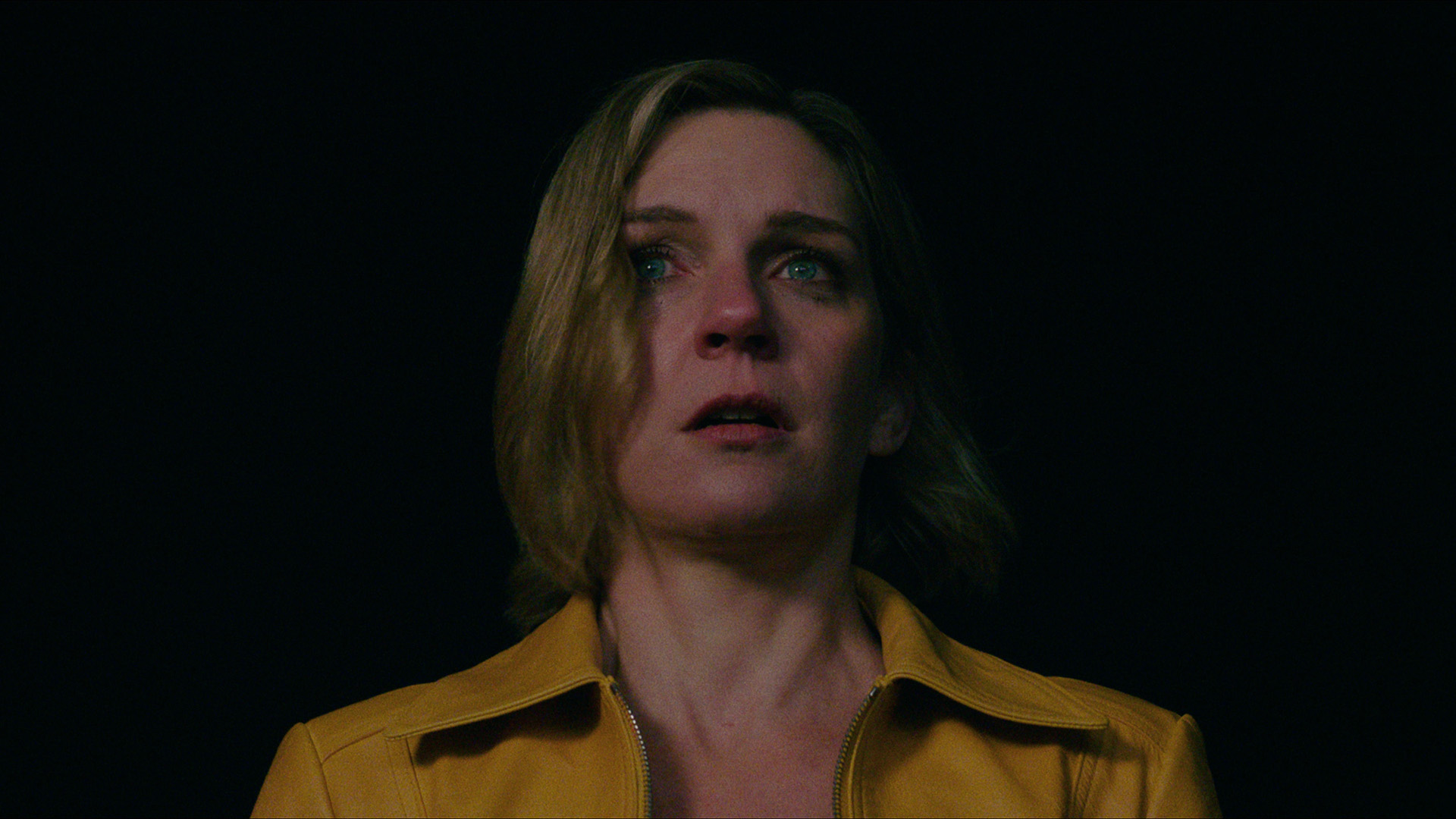Hands-on with Yakuza 7: Like a Dragon, the wildest and riskiest Yakuza game yet
Arriving in the West later this year, expect some pretty major changes to play in Yakuza 7: Like A Dragon

Having thoroughly trounced a room full of thugs, we witness a familiar sight in Yakuza 7: Like A Dragon as a larger, better-armed group of toughs bundle through the door. Ordinarily, this would be the time for Kazuma Kiryu to crack his neck, loosen his shoulders and raise two clenched fists in preparation for taking them down single-handedly. But Ichiban Kasuga is no Kazuma Kiryu, and this is no ordinary Yakuza game. Kasuga isn't even alone, in fact – and yet he takes one look at the uneven odds and, perhaps sensibly, decides to get the hell out of there.
Despite their differences, the series' new lead has plenty in common with his predecessor. Both are orphans, raised by surrogate father figures in high-ranking positions within the yakuza. And both are incarcerated for crimes they didn't commit: in this case, Kasuga takes the fall for Masumi Arakawa as a way of repaying his debt to the man who took him under his wing as a wayward teen.
He emerges after an 18-year stretch to find the Omi Alliance has taken over Kamurocho from the Tojo Clan, while worse is to come when he confronts Arakawa, who seems to have abandoned his former protégé. Shot and left for dead, he wakes up surrounded by garbage bags in Yokohama. It might sound like a depressing start, but it's leavened by a familiar streak of fish-out-of- water comedy: echoing Kiryu's struggles with modern technology, Kasuga seems similarly baffled by this new world of smartphones, vapes and selfie sticks. Yet thanks to the help of a kindly homeless man, disgraced former doctor Namba, he's soon back on his feet.
Life after Kiryu

It helps that Kasuga is seemingly more outgoing than the taciturn Kiryu. He's positively garrulous, in fact: charismatic and bristling with wide-eyed enthusiasm, he seems to make friends easily. Before long, he's formed a party of three alongside Namba and ex-cop Koichi Adachi, a bear of a man who has his own motives for staying friendly with Kasuga. They're later joined by hostess Saeko Mukouda, after a tragedy involving the owner of the club she helps to run, and that's your classic JRPG party of four. If Kasuga is the de facto lead, his companions get plenty of character development of their own: it makes for almost certainly the most dialogue-heavy Yakuza to date, but also a genuine ensemble piece.
But the biggest change comes when you engage a group of enemies. The new battle system suits Kasuga, whose affection for JRPGs bleeds not just into the turn-based combat itself but in the way enemies and allies transform in front of his eyes. It feels almost like an elaborate delusion, or perhaps the result of an overactive imagination, prompted by the moment he pulls a baseball bat wrapped in barbed wire from the ground as if it were Excalibur. Low-ranking yakuza and street thugs look normal from a distance, but adopt ever more outlandish guises when you engage them – from weirdos wearing bin bags and seemingly nothing else to creeps with flasher macs that attack by thrusting their bottoms at you.
There's much more to the combat than simply selecting moves from a menu and watching animations play out. With active elements on top, its dynamism is reminiscent of the Persona series, but with a few recognisably Yakuza twists. Launch a standard attack, and if an object is in Kasuga's path as he jogs over to his target, he'll either kick it towards them or, if it's large enough, pick it up and swing it for extra damage.


This feature first appeared in Edge Magazine. If you want more great long-form games journalism like this every month, delivered straight to your doorstop or your inbox, why not subscribe to Edge here.
Special attacks (essentially Heat moves, in old money) that consume MP can be boosted by mashing Square or tapping Triangle at the right time. You can defend for a turn to lower damage, and minimise it further by hitting Circle as an attack lands – though the timing window is surprisingly narrow, and for some multi- hit moves you'll need to keep pressing it. Though, particularly if you've equipped some gear to increase your evasion stat, you'll occasionally see them dash back out of harm's way.
Weekly digests, tales from the communities you love, and more
As a result, fights still have the sense of thrilling energy and spontaneity we've come to expect. Though you can't move characters directly, they'll naturally shuffle around, bringing extra tactical wrinkles into play. Positioning becomes key – you can wait until your chosen target wanders next to a couple of others before launching an AOE attack, whether it's Namba breathing fire or Adachi swinging a goon around by their feet. Then again, it sometimes pays to act quickly – when an enemy is grounded, a regular attack from the next character in line will deal extra damage.
Before it all kicks off, you can attract the attention of a group on the street and kite them into the road. Approaching cars will come to a standstill, honking their horns, but with luck, you might be able to knock an enemy into a stationary vehicle for a massive chunk of bonus damage. The slapstick doesn't end there – sledgehammer- wielding enemies will occasionally lean too far on the backswing and topple over, while oiled-up sunbathers carrying airbeds sometimes slip and fall flat on their faces as they sprint to attack you.
Kamurocho calling

Alternatively, like Ichiban during that eye-opener of a cutscene, you can beat a tactical retreat. There's much more reason to do so than in previous Yakuzas, whether you’ve inadvertently stumbled into a gang of high-level enemies – or if you're simply low on HP and MP, having exhausted all your recovery items. Then again, perhaps that’s because we're slowly adjusting to a game where, at least in the early stages, the restorative items we've come to rely on are too expensive for a man with a much smaller wallet. Still, if Staminan Royales are out of reach, we've always got rice balls to scarf down in a pinch. And once we switch things up a bit and start using Namba's healing powers – and equipping new gear that recovers MP after each turn – we're no longer having to stop by a Poppo every few battles.
Namba can still heal when you've recast him as a musician, strumming uplifting tunes to boost stats and turning CDs into deadly projectiles. These role changes are part of a job system, a well-worn JRPG idea that feels refreshed by its contemporary setting. Adachi, for example, becomes a tanky riot cop with a powerful shield bash and an elbow-drop finisher. After a brief flirtation with a B-boy outfit for Kasuga – giving him a move set that riffs on Majima's Breaker style from Yakuza 0 – we turn him into a gaudily suited, champagne-swilling host who sprays jets of bubbly over foes to leave them drunk and disorientated.
Idol- class Mukouda's most costly attack sees her call upon a trio of angry fans, who'll repeatedly whack her assailants with neon glow sticks. There are summons, too, accumulated by completing sub-stories, though most require a fairly hefty payment, and there's a cooldown on each of them. As such, you can only realistically rely on them as a last resort – at least for a while. Though we hesitate to give any of them away, we'll just suggest you complete the sub-story involving a belligerent crayfish.

"Fights still have the sense of energy and spontaneity we've come to expect."
Sega has dialled up the silliness, then, but Yaluza 7: Like A Dragon is grounded by its setting. After a brief glimpse at Kamurocho through new eyes, the district of Isezaki Ijincho is – despite its evident waste-disposal problem – a breath of fresh air. It's also much larger, and starts out as an unknown quantity (much as it would be to Kasuga) requiring you to fill in the map by exploring. At first you'll want to walk everywhere, and not just to take in the new scenery – in the early game, Kasuga is flat broke, and actively invited to forage around vending machines for loose change. After a while, you’'l be able to take the game at your own pace – if you need to grind a few job ranks against relative lightweights, then it makes sense to walk everywhere. But if you're in a hurry to get to the next story mission, or simply fancy a shortcut to the weapon crafter, say, then a cab makes for a reasonably-priced fast-travel option.
Though the city is a little sparser, it's still dense with enjoyably distracting side- activities. The slow-burn plot presents plenty of moments of natural downtime, while you'll probably feel the need to take a load off after a boss fight or a lengthy trek through a labyrinth below Yokohama's streets – because yes, this is a Yakuza with dungeons, after a fashion.
The need to recover HP and MP between fights, meanwhile, gives you all the more reason to visit the district’s various eateries, with set meals boosting your affinity with your fellow party members. Once that's reached a certain threshold, you'll open up conversation options at a local bar, your choices here boosting Kasuga's stats, while taking your friendship to the next level – in turn increasing the chance of automatic follow-up attacks in battle. And of course you can also indulge in a spot of karaoke.
There's enough of the old to allay the shock of the new, in other words. But so far it's those differences that help make Yaluza 7: Like A Dragon the most purely enjoyable entry in this series since Yakuza 0. Perhaps the best thing we can say about it is that we don't miss Kiryu nearly as much as we imagined we would. It might be a while before we can say the same for Kamurocho, but there are signs already that, just maybe, we'll come to love Yokohama as the new home for this weird and wonderful new breed of Yakuza.
Yakuza 7: Like a Dragon is one of the upcoming Xbox Series X games, arriving in the West for Holiday 2020.
Edge magazine was launched in 1993 with a mission to dig deep into the inner workings of the international videogame industry, quickly building a reputation for next-level analysis, features, interviews and reviews that holds fast nearly 30 years on.



